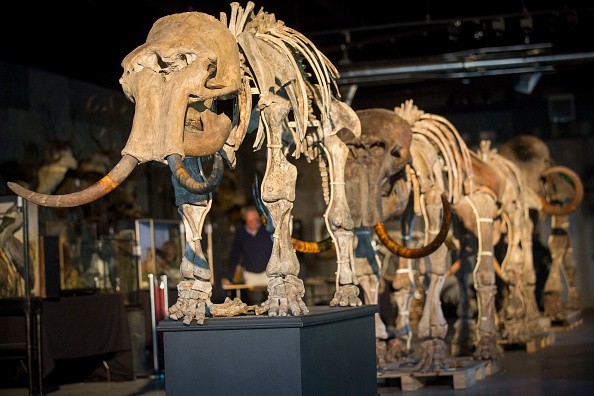These frozen prehistoric animals are extremely well-preserved and now famous all over the world.
The remote and icy north of the Yakutia Republic in Siberia has become famous for the discovery of remnants of Ice Age mammals within its thick permafrost deposits.
In some cases, completely buried carcasses that have been shrunken and dried up to a natural mummified state have been unearthed.
Such discovery can help experts answer major questions about defunct species, the conditions in which they lived and their relationships to other species both animals alive today.
Here are 5 of the most popular prehistoric creatures discovered while preserved in the frozen depths of Siberia.

1. Woolly Rhino Baby Named Sasha
This woolly rhino baby, lovingly named Sasha by the man who discovered it, was the first juvenile member of its species ever discovered. It's uncertain if it is male or female, but the size of its horn indicated it had been weaned by the time it died. It wandered around the mammoth steppe, a cold, dry region from Spain to Siberia. While the rhino adapted well in icy cold conditions, its short legs may have battled with an increase in deep snow brought about by the higher temperatures of the early Holocene and late Pleistocene, Boeskorov believes.
2. Lion or Lynx
In 2017, researchers dug up a squashed, mummified cat in eastern Siberia. It could either be a cave lion cub or a lynx kitten. Its coat is in good condition, but researchers can't be certain of the species as they don't actually know what a cave lion looked like.
3. Mammoth Calves
Tourers dug up two mammoth calves dating to around 40,000 years ago in two dissimilar areas of Siberia. Scientists took a closer look at the samples with the use of CT scans and they found out that both baby mammoths had suffocated on mud. The little mammoths appeared otherwise fat and healthy when they met their death.
4. Ancient Bison
The most complete steppe bison specimen ever discovered is 9,000 years old. Its heart, brain, and digestive system were complete, together with a near-perfect blood vessels. Some organs have diminished over time but are remarkable, nonetheless.
The steppe bison inhabited Asia, northern Europe, and North America, especially during the Pleistocene between two million and 11,700 years ago. It was quite larger than the American bison of today, with larger horns and a second hump on its back.

5. Frozen Foal
A two-month-old horse that lost its life between 30,000 and 40,000 years ago made its way roughly 328 feet (100 meters) beneath the surface, deep in a Siberian crater. In life, the juvenile horse stood nearly 3 feet (1 m) tall, and its hooves are still available, along with tiny hairs that are still evident inside the nostrils of the foal.
Related Article : Researchers are Sequencing Two Prehistoric Bear Species Using Only Prehistoric Poop Traces
For more news, updates about prehistoric creatures and similar topics don't forget to follow Nature World News!
© 2025 NatureWorldNews.com All rights reserved. Do not reproduce without permission.





